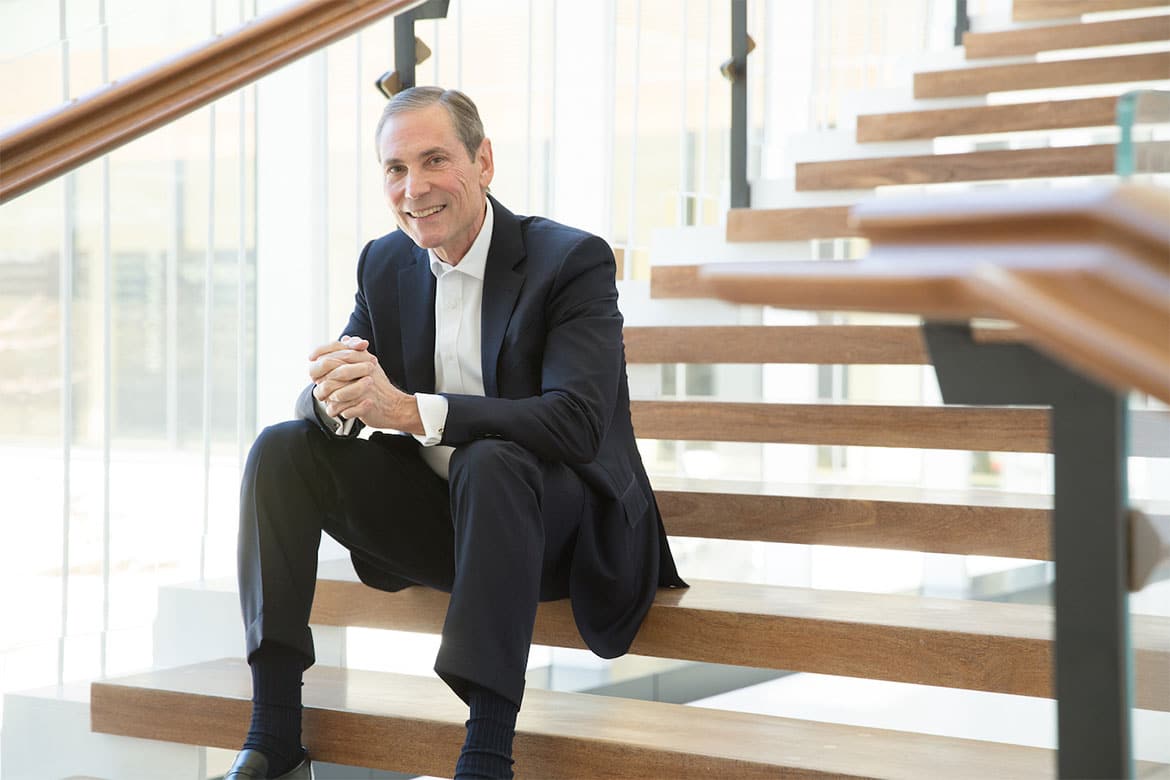
With 39 years in real estate, Sotheby’s International Realty President and CEO Philip White has seen the housing market weather many storms, namely the 2007 housing bubble and the accompanying recession that took Americans nearly 10 years to recover from.
Little did White know, his experience leading Sotheby’s International Realty affiliates through the Great Recession would prepare him to guide the brokerage and its 23,000 agents through the coronavirus pandemic, which has transformed what consumers want and how real estate professionals deliver excellent service.
In a phone call with Inman, White shared his thoughts about Sotheby’s International Realty’s investment in virtual reality, what luxury homebuyers want most and which markets are thriving as remote working leads to a great reshuffling to the suburbs and secondary markets. This interview has been edited for length and clarity.
Inman: How has the pandemic impacted your priorities for Sotheby’s International Realty? What have been some of the challenges and victories you’ve experienced this year?
White: Going into the pandemic in middle of March, business was doing extremely well. We had the best first quarter that we’ve ever had in terms of sales volume. It seemed like record prices were being set almost on a daily basis.
Going into COVID, there were a lot of unknowns, and we expected a tough time. I went through the 2008 financial crisis, really leading the brand back then as well. I was reminded that the high-end part of the market actually led us out of the 2008 financial crisis.
I felt like my role was to be positive, and when things started loosening up, we started to see business come roaring back. We were still down, but the trend lines, even in April, were starting to trend up. And then June, July, August, September, and even into October, sales have been very strong.
I think there’s been great momentum; some of it was pent-up demand coming out of the first quarter. Then [some of it was] people changing their lifestyles, and maybe buying a second home sooner than they thought they would and resetting their priorities.
The pandemic has reinforced our commitment to providing high-quality service to consumers and arming our agents with the tools and innovative technology they need to succeed. I’m very proud of our brand because over five years ago, we were the first one to launch virtual reality on our website, and during the pandemic, all of those investments really paid great dividends.
We had a lot of videos on our website that had 3D images that allowed people to search for properties, even while they were sheltering in place. That helped our agents get through that slowdown. We believe that the first showing of a house happens online, and we’ve seen tremendous success with that approach.
This year has also been particularly good for mergers and acquisitions. We’ve completed ten mergers and acquisitions, and we’re continuing to expand here in the US and internationally.
What are some of the improvements you’d like to make with Sotheby’s technology? And what are some emerging technologies you’d like to add in the future as consumers begin embracing a totally digital homebuying experience?
We’re having significant success recruiting top real estate professionals, and all of that goes into what our brand is investing in. As I mentioned, we’ve invested in a new website, which is an ongoing investment. Next year, we’re looking to make a significant capital investment in the website to give it even more functionality that will benefit all of our agents on a local basis. We’re also investing in other virtual solutions, CRM offerings and our overall tech stack.
One item that we’re launching is an internal technology piece. It’s a marketing center that we’ve completely redesigned and made available to all of our agents in all of our companies.
It’s a robust system that allows them to go into the marketing center and create new ads, templates, brochures and social media assets. Our graphic artists create a lot of content, so it’s very easy to use; they can populate their listings right into the marketing center. It’s an efficient and effective way our agents can access technology to serve the needs of their clientele.
The other one is a global referral platform we created over the last number of years. Again, it translates to 18 languages so a broker in New York City can place a referral to another agent in Paris, London, Montenegro, Bucharest or Aspen. It’s accepted in the system, and they can track it see how that referral is progressing. We’re having a tremendous amount of referrals, and our sales volume has increased so substantially year-over-year.
The other one that we invested in is augmented reality. We have a product called Curate, which was first to the market. We partnered with Google on that, and we’re very proud of it. It’s also allowing more virtual showings of properties, and allowing people to houses in detail houses, they can view without actually being there.
We had a complete virtual closing in Aspen during the pandemic on an $18 million penthouse. The property was sold sight unseen, based on the technology available on that property, which set of record of $6,000 a square foot.
This reminds me of the conversation I had with REALM founder Julie Faupel a few days ago. She spoke about consumers’ evolving needs and attitudes toward luxury real estate, where they’re focused on how their home adds to their overall wellbeing. Have you noticed that? How are your agents and affiliates meeting consumers’ rapidly changing needs?
In our experience, luxury has always meant different things to different people. But I think overall, and this has been kind of our mindset from the beginning. It’s really borne out to be very true today, during the pandemic. Luxury is about convenience, comfort and a very high level of customer service.
The luxury buyer really needs to have a lot of trust in the agent they’re working with, and the agent needs to provide extremely good service. That’s what wins the business.
Sotheby’s International Realty has somewhat pre-sold to that consumer because they know us and know what we stand for. They know our culture is about a high level of service and we have a high standard to deliver. That’s what luxury is about. It’s not so much the amenities — it’s really about providing great customer service.
Adding to that, I think families are spending more time together, and that’s a good thing. They’re looking at their house and reevaluating so many things [and] whether that’s the right house for them. They’re looking for entertainment rooms, dining rooms and obviously, they’re looking for houses or apartments that have a home office or, in some cases multiple [offices] because there’s more than one person at home working.
Some people are relocating to a resort as a co-primary house, if you will, like the Hamptons, and many people are relocating to more of a country location, like, in northern Westchester County or parts outside of New York City.
That’s happening internationally as well. People are buying larger houses outside the U.S., and they’re buying properties in the country. We’re seeing a lot of that activity some of our markets internationally are going to have record years as a result.
I think everyone has accepted the idea of a new normal that includes new consumer needs and new ways of doing business. I know Sotheby’s International Realty agents are incredibly talented, but what are some skills you’re helping them to improve or build to stay competitive in the U.S. and overseas as we work through a global pandemic?
One thing that really helped us during the lockdown is that we focused on training. I remember early March and April when our agents weren’t able to show properties, we gave them many lessons about how to work on their database of customers and load their consumers into their CRM database. We worked with them on how to do that.
We had broker panels where select brokers provided best practices and what they were working on, so they would be prepared when the lockdown changed, and they could start showing properties again. We also had speakers from Facebook in a large town hall meeting and where we talked about Facebook Live and how to use that for virtual open houses.
We also had real estate coaches and training opportunities with a real estate coach. That coach, in some cases, would focus on the agents’ mental health. There were times when we were concerned that [our agents] were depressed and were worried the market would not come back. So we worked on keeping their spirits up.
Personally, in every kind of virtual instance I could, I tried to keep everybody spirits up. I tried to be very positive. I tried to tell them about my experience in 2008, where the market was down for a while, but then when it rebounded and came back very strong.
I think we did a very good job in that respect, and our agents were very grateful for the support we provided.
How have your agents and affiliates dealt with this great reshuffling? What markets are thriving and which markets are struggling to bounce back? How are you helping your team pivot?
We have a vast network of affiliated companies, and we have 46 company-owned offices in 12 markets that I oversee as well. We’re up in 11 of those 12 markets, in some cases, double digits.
The one market that’s down is New York City. But, I was in New York City at our office yesterday, and there was a lot of activity. So even though the market is down year-over-year, I feel positive about it coming back.
I think it will take some time, but there is activity and there are transactions. We made a sale this week that’s going to be a record sale. I don’t know if you’ve ever talked to Stan Ponte, but Stan sold a penthouse in Soho during the pandemic for $35 million sitting on record for that neighborhood. So we do have some positive news coming out of that market.
But that is the one market that’s down. Others like the Hamptons, Cape Cod, Boston, Destin, Vail, Aspen, Jackson Hole, Malibu, Los Angeles, Sonoma, San Francisco, Santa Fe and Caramel are having record years.
We have a great company in Destin, Florida, called Scenic Sotheby’s International Realty, and just a month ago, they surpassed a billion dollars in sales volume. And that was their full-year goal. They’ve never done that before.
It seems like Sotheby’s International Realty has some great momentum going into 2021. What’s your vision for the company next year?
We’ve spent a lot of time planning for 2021. I’m still looking for those companies out there that could be a good cultural fit for Sotheby’s International Realty, so I can grow our footprint and support our franchisees as they acquire companies. I was on the call this morning with our affiliate in Japan, and they’re looking at an acquisition, and I’m working on how we can help provide support as they grow their footprint.
We are very innovative in terms of marketing and our 2021 plan is exciting as we’re working on a new media campaign. We launched earlier this year our relationship with a magazine in Mexico, called Expansión, which is the first-ever global real estate portal in that part of the world.
We are also working on additional affiliations with portals on a worldwide basis to provide maximum exposure for our clients’ listings worldwide.

